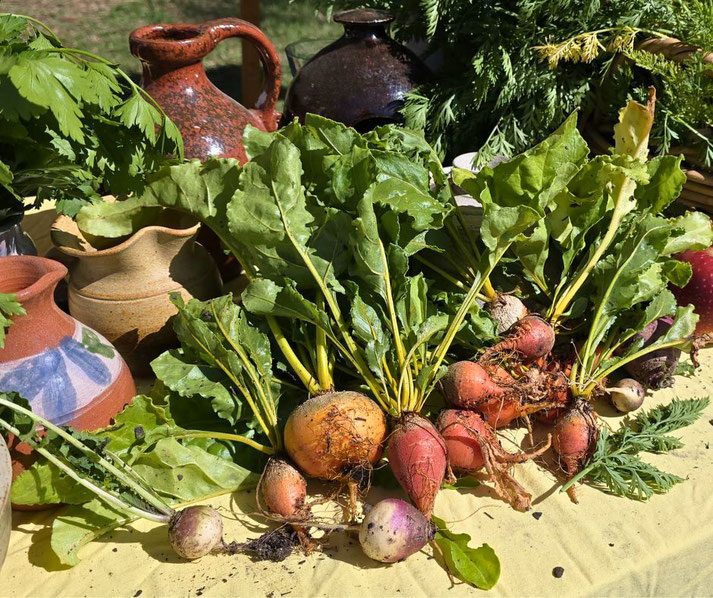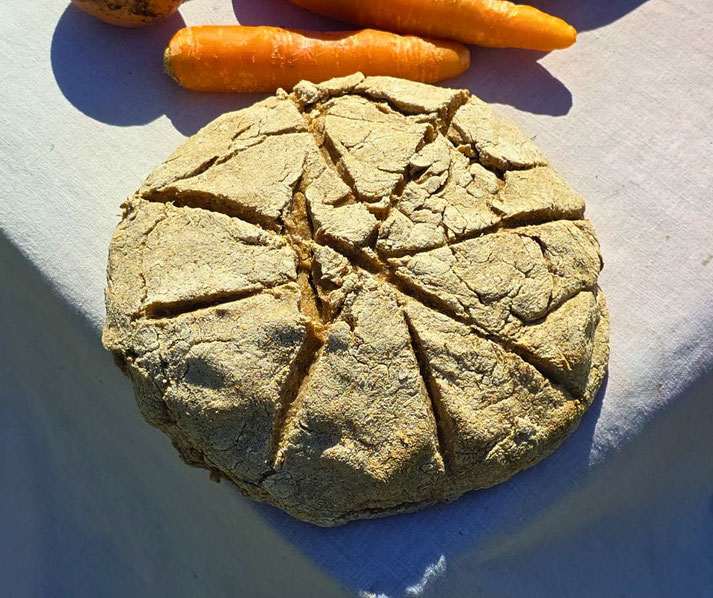What did ancient Romans eat and drink? The bland and the excessive diets of an empire

As ancient Rome expanded its sprawling empire, it slowly developed a sophisticated culture. Today, the Romans are known for their lavish feasts and exotic dishes. However, this was not the reality for most people.
In fact, the disparity between the meals of the wealthy and those of the common people was incredibly stark. While the rich indulged in sumptuous banquets, the poor subsisted on a very basic fare.
Here is what you need to know about the eating and drinking habits of the ancient Romans.
What were the daily meals of the Romans?
Just like us, the ancient Romans had three main mealtimes: breakfast, lunch, and dinner.
The morning meal, which was known as ientaculum, was typically a modest affair.
It consisted of bread with salt, honey, or olive oil, accompanied by either a weak wine or water.
Also, it often included leftovers from the previous day's dinner,
For lunch, or prandium, the Romans would have a slightly more substantial meal. This might include cold meats, cheese, and fruits.
In contrast, dinner, or cena, was the main meal of the day and could be quite elaborate for the wealthy.
Depending on the resources a family had available to them, it could feature multiple courses with a variety of meats, vegetables, and desserts.

What kinds of foods did the Romans eat?
Grains were the most important element of the Roman diet. Bread made from either wheat or barley was a daily food for all classes.
However, the quality of the breads varied greatly. The wealthy enjoyed fine, white bread, while the poor ate coarse, darker bread.
Additionally, porridge, or puls, made from spelt or barley, was a fairly common meal for the lower classes and Roman soldiers.
In fact, the state's control over the grain supply was of crucial importance for maintaining social stability.
This was especially true in the city of Rome, where free or subsidized grain distributions (called the Cura Annonae) were common.

Vegetables and fruits still played a role in the Roman diet, however. Legumes such as lentils, beans, and peas were crucial sources of protein, especially for those who could not afford meat.
Alternatively, people could eat cheese, made from the milk of cows, sheep, or goats, for protein.
Eggs too were a versatile and accessible source of protein for the Romans.
They were used in various dishes: from simple boiled eggs to more elaborate recipes like omelets or egg-based sauces.
Fruits like apples, pears, and grapes were also widely popular: both fresh and dried.
As a predominantly agricultural society, fruits were easy to obtain in the markets throughout the empire.
Generally, they were relatively cheap to buy, so were consumed by people at all levels of society.
In contrast, meat and fish were more commonly consumed by the rich, due to their higher cost.
Pork, poultry, and lamb could be found on the tables of the elite. Often, they were prepared in stews or roasted.
Fish and seafood were more often salted or dried for those living away from the coast.
For the extremely wealthy, exotic meats such as peacock, flamingo, dormice, or ostrich were sometimes featured at banquets.
The purpose of presenting these animals as food was more about showcasing their opulence and influence than for the quality of them as sustenance.

Did they have any seasoning or condiments?
Just like us, Romans like a variety of seasonings and sauces to add flavor to their dishes.
The most famous of these was garum, a fermented fish sauce that was used much like modern soy sauce.
It was a staple in Roman cuisine, prized for its potent flavor. In addition, herbs and spices such as coriander, cumin, and mint were common.
Probably the most common was salt. It was not just used for flavor but also for its preservative qualities.
It played a vital role in the storage and transportation of food, especially for meats and fish.
Moreover, the Roman love for sweet and sour flavors led to the use of honey and vinegar in many recipes, adding a distinctive tang to their meals.
The variety of seasonings and condiments in Roman cuisine provides a clear reflection of the empire's vast trade networks and cultural exchanges.
Many of these ingredients needed to be sourced from exotic geographical locations, such as black pepper from India or dates from North Africa.
Therefore, their use in cooking was used as a way of indicating a person’s wealth and status.
As a result, for the Romans, the ability to season their food with exotic spices and sauces was a mark of sophistication and refinement.
What did the Romans drink?
Water was the most common beverage in ancient Rome, though it was often of dubious quality.
To improve the taste and safety of their water, the Romans would mix it with wine or vinegar.
This practice not only made the water more palatable but also helped to kill bacteria.
In addition to water, milk was commonly consumed. This was usually taken by children or the sick, as it was not considered a suitable drink for healthy adults.
However, wine was the beverage of choice for most Romans. They consumed it at every meal by people of all social classes.
But it was rarely drunk straight; instead, it was diluted with water, sweetened with honey, or spiced with herbs.
Also, its quality varied greatly. The elite had access to better quality wines, while the lower classes drank more diluted and lower-quality wine.
In fact, the vineyards of regions like Falernum and Caecubum were renowned for producing some of the finest wines of the empire.
Other beverages like beer were known but less popular, mainly consumed in the northern provinces.
As a result, it was considered to be a 'barbarian' drink by many Romans.
Posca, a drink made from vinegar and water, was a staple for Roman soldiers.
Special occasions and feasts
Feasting on important events, both public and private, was an integral part of Roman culture.
Such events provided an abundance of food and drink, with menus designed to impress guests and honor the gods.
For example, during the Vestalia, a festival dedicated to Vesta, the goddess of the hearth, special cakes (called mola salsa) made from spelt flour and salt were offered.
These religious feasts were not only occasions for worship but also opportunities for communal bonding and socializing.
Banquets were also a common way for the elite to display their affluence and social standing.
These events featured multiple courses, elaborate dishes, and entertainment.
The manner of eating at these banquets, with guests reclining on couches, was a luxury reserved for the upper class.
For the common people, meals were much more modest and usually eaten while seated.
How did the Romans store their food?
The Romans used a number of ways to preserve their food for as long as possible.
This mostly included drying, salting, and smoking. For example, fruits and vegetables were often dried in the sun, while meat and fish were salted or smoked to extend their shelf life.
Additionally, the use of honey and vinegar as preservatives was particularly common in Roman cuisine.
Granaries were typically used to store grains, which protected them from pests and moisture.
In contrast, wine was kept in ceramic amphorae, sealed with resin or wax to prevent oxidation.
If people had the resources, the construction of underground storage facilities, like cellars, also helped keep food cool and fresh during the warmer months.
What do you need help with?
Download ready-to-use digital learning resources
Copyright © History Skills 2014-2025.
Contact via email
With the exception of links to external sites, some historical sources and extracts from specific publications, all content on this website is copyrighted by History Skills. This content may not be copied, republished or redistributed without written permission from the website creator. Please use the Contact page to obtain relevant permission.





